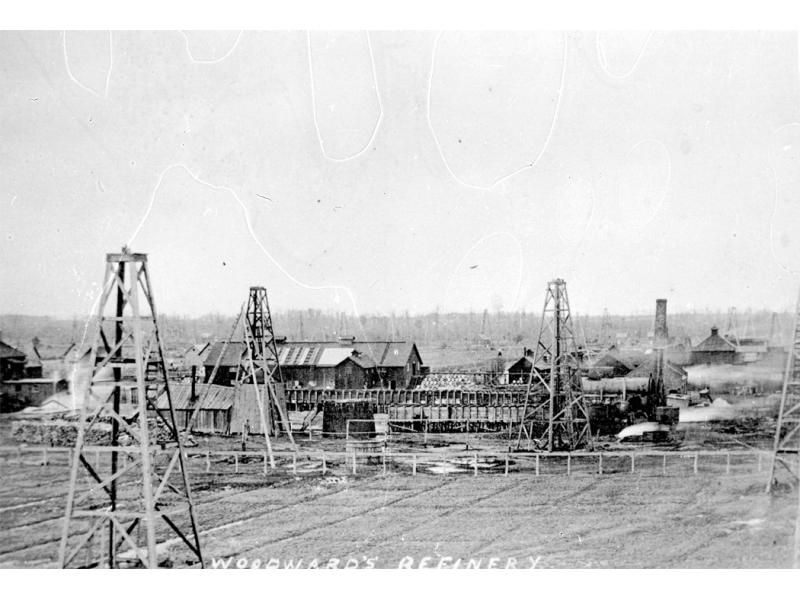Crude oil consists of a mixture of many different compounds and when the oil is heated, the molecules of each of these compounds separate based on their weight, with lubricating oil and asphalt sinking to the bottom, kerosene in the middle, and gasoline rising to the top.
The isolation of Lambton County continued to force oil producers to become innovative, this time with their tools for refining oil. James Miller Williams was the first oil producer in North America to refine his own oil and sell it commercially in 1858. Around 1862, Hugh Nixon Shaw invented a primitive kind of still for refining his crude oil. This consisted of two large, cast-iron sugar kettles placed one on top of the other to form a contained unit. A pipe led from the top of the kettles into a condenser. As the crude oil was heated by a fire underneath, the vapours passed through the pipe. A small pipe allowed the lighter vapours to escape while the remaining were liquefied and entered the collection tank. In the early days of oil exploration, there was no use yet for gasoline and so this compound was simply dumped into the nearby creek. On one occasion, a heavy rain storm caused the water level of the creek to rise, eventually reaching the fire of the still causing the still to explode and the creek to ignite.
As more producers arrived in Lambton County, some men began to specialise in their work and soon larger refineries were built. By 1864, Oil Springs had 20 refineries and Petrolia had five of their own. In 1878, Jacob Englehart emerged as a preeminent businessman and constructed the largest refinery in Canada, the Silver Star Refinery in Petrolia to supplement his already thriving refinery in London, Ontario.



 M.J. Woodward opened an early oil refinery in Petrolia in 1870.
M.J. Woodward opened an early oil refinery in Petrolia in 1870. 

Add new comment